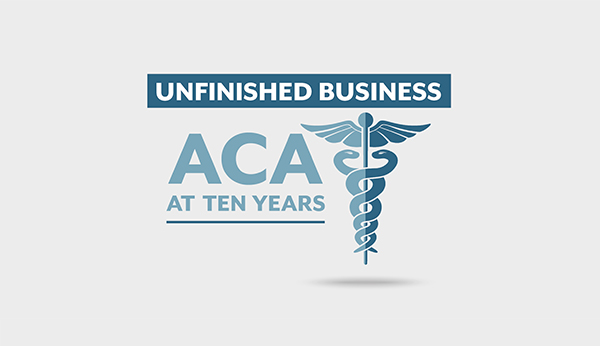
ACA at 10 Years: Provider Costs
When more patients have insurance coverage, hospitals have to provide less charity care and take on less bad debt. The ACA brought a substantial decrease in how much care providers are writing off — from $700 million in charity care and bad debt in 2013 to $286 million in 2017.
Dramatic increases in Medicaid coverage have meant that more dollars are paid to providers through Medicaid reimbursements. In fact, hospitals in Colorado have seen payments from Medicaid nearly double since the passage of the ACA, from $1.3 billion in 2013 to nearly $2.2 billion in 2017. While Medicaid reimburses for services at lower rates than private insurance, it offers more consistent reimbursements than uninsured patients, whose payments make up only about a quarter of the costs providers incur to treat them.
Providers should have benefitted from increased Medicaid reimbursements and decreased amounts of charity care and bad debt. But Medicare and Medicaid pay providers and hospitals less than it costs to provide care, which is known as underpayment. Providers have seen a large increase in underpayment, from missing out on $1.6 billion in 2013 to nearly $2.5 billion in 2017. The increases in underpayment have been more than enough to offset the decrease in charity care over time.
Uncompensated care — the combination of charity care, bad debt, and underpayment from Medicare and Medicaid — has risen since the passage of the ACA, from $2.3 billion in 2013 to $2.8 billion in 2017. This increase is due to rising underpayment from Medicare and Medicaid.
Despite the rise in uncompensated care, hospitals and providers are making record profits.
Payments from commercial insurance plans have skyrocketed, rising by a total of $3.4 billion since 2009 and topping $9 billion in 2018. The cost of caring for commercially insured patients totaled $5.6 billion in 2018, an increase from $3.9 billion in 2009.
This is where the numbers become difficult to interpret. Uncompensated care measures payments against hospitals’ internal costs. The crux of the issue is that the hospitals themselves define how much caring for patients has cost their organization. These costs factor into the community benefits non-profit hospitals must provide to retain their tax exempt status.
Hospitals’ internal costs of caring for Medicare and Medicaid patients have risen dramatically since the ACA took effect. While we don’t know what is driving costs up, increasing demand is likely part of the equation. Research shows that people with health coverage are more likely to seek out health care than people who are uninsured.
However, officials in Gov. Jared Polis’ administration and their legislative allies have argued that hospitals could be more disciplined in controlling their internal costs, which would reduce the amount of uncompensated care because their dollars from Medicare and Medicaid would go further. Hospitals say they already operate efficiently. Without better data on hospital finances, it’s not possible to say which argument is more accurate.
Doctors’ offices and hospitals are private businesses, which limits transparency and public knowledge of their financial data. But profit data is public. Some hospitals, especially in urban areas, are bringing in more money than ever before: hospitals in Colorado reported $2.9 billion of net income in 2018. Rural and critical access hospitals often have very small profit margins, so these profits aren’t reflective of all hospitals’ experiences. In fact, just four hospital systems accounted for nearly all of the $2.9 billion profit: HealthONE, UC Health, SCL Health, and Centura Health. The increase in income is tied to year-over-year price increases across all payer types.
Lofty hospital revenues, coming as more Coloradans are struggling to afford health care, have led to skepticism from the public and increased efforts from the legislature to crack down on health care prices. Better hospital financial transparency is one way to learn more: House Bill 19-1001 requires hospitals to share additional information on what they include in uncompensated costs and how they spend their income. The first reports under that bill are due this summer.
Physicians, and the practices they own, are being caught up in these larger system dynamics. In recent years, large health systems have gotten larger by buying smaller hospitals and physician-owned practices. Over half of hospitals in Colorado (43 of 83 hospitals) were part of a health system in 2018, an increase from 26 hospitals in 2009.
Representatives of large health systems cite economies of scale as opportunities to decrease costs to consumers, but opponents point towards increasing prices and decreasing quality of care as evidence against this argument. Arguments over provider profits and practices are among the most complex and contentious questions in health care that were not solved by the ACA.
CHI has one chapter remaining in our series: a look at how the ACA has spurred innovation in information technology and health care data.



